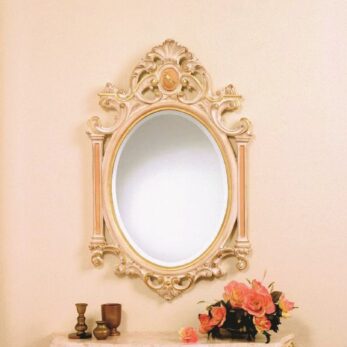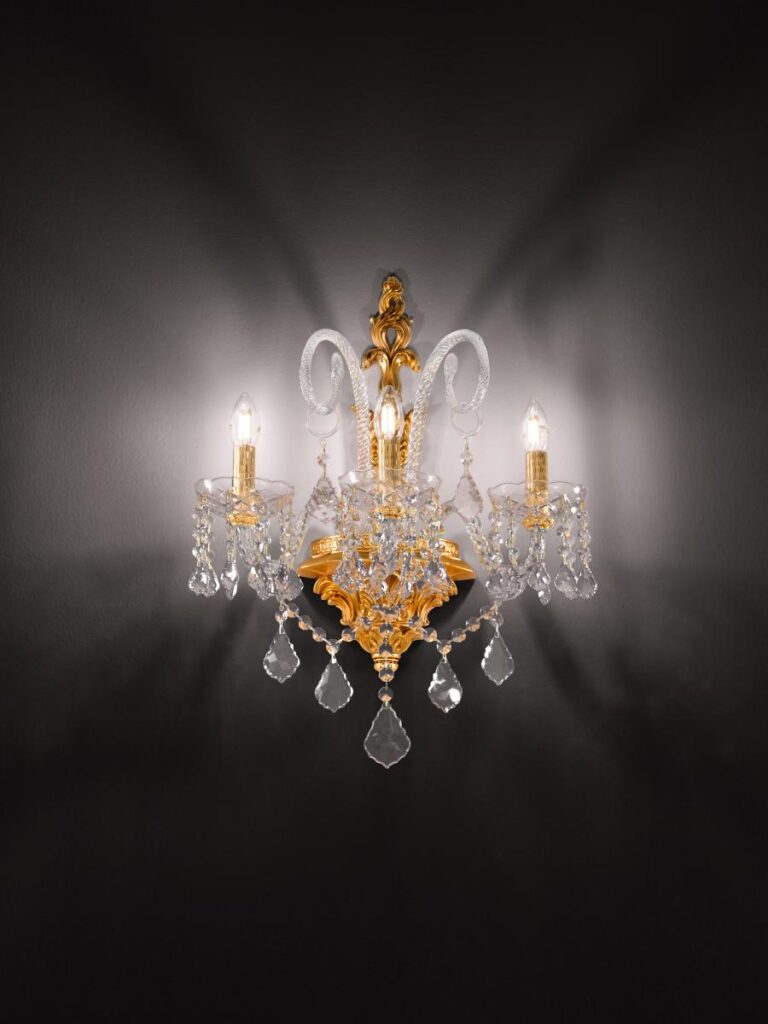Wall lights are one of the most popular and widely used types of interior lighting in recent years. The success of wall lights, and of wall lighting in general, is due, on the one hand, to the ease with which they can be installed, and, on the other hand, to the possibility of illuminating corners of rooms with a direct light that with traditional ceiling lighting generally remain dark.
However, wall lights are not only a source of light, they are also original furnishing objects that can be used to fill and decorate walls. In fact, wall lights originated in the Baroque era for precisely this purpose. At that time, in fact, wall lights were considered as decorations that echoed the style of the central light source and were more of a decorative and aesthetic element than an interior lighting element.

Why choose gold and crystal wall lights
On the market today we can find different types of wall lights that differ in style and materials and are therefore suitable for decorating rooms with different furnishing styles. They range from wall lamps with a modern design, to LED wall lights with spotlights that can be oriented at different points, to the timeless gold and crystal wall lights.
Gold and crystal wall lights are clearly designed to illuminate rooms furnished in a classic and luxurious style. Gold and crystal are in fact precious materials, characterised by a high degree of brilliance, and thus contribute to creating an even more defined point of light on the walls. Among the models made of these materials we can find wall sconces with more squared and modern shapes, but also wall sconces with more traditional forms. An example of this second type are the two-light wall sconces that recall the shapes of the ancient candelabra that were placed on the walls.
Every room has its own wall light
In principle, gold and crystal wall lights are suitable for decorating and illuminating various types of interiors. However, there are rooms in which the characteristics and potential of wall lights are enhanced to a greater extent.
For example, in entrances or long corridors, wall lights can be used to highlight certain points in the room, generally those characterised by the presence of antique furniture (such as shoe cabinets, coat racks or wooden drawers) or paintings and photographs.
The beauty and effectiveness of wall lights is also emphasised in rooms such as the living room or dining room. In this case the wall light is a point of light, but also a furnishing object: it illuminates corners left more shadowed by central lighting and at the same time picks up the style of the ceiling chandelier and decorates the walls.
Crystal and gold wall lights can also be used extensively in bedrooms, where they can be found as an alternative solution to the more common bedside lamps to illuminate the bed with a direct light. In bathrooms, on the other hand, wall lights are often placed above the washbasin and mirror to illuminate this area more brightly and precisely.



